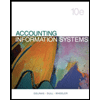
1.
Transfer price: Transfer price is the price at which goods and services are transferred between divisions or centers in an organization. The price charged for the transfer of goods and services is recorded as an expense in the buying division and revenue in the selling division.
:
Whether the division accepts or rejects the $340 price.
2.
Transfer price: Transfer price is the price at which goods and services are transferred between divisions or centers in an organization. The price charged for the transfer of goods and services is recorded as an expense in the buying division and revenue in the selling division.
:
The financial advantage or disadvantage if division Q rejects the $340 price.
3.
Transfer price: Transfer price is the price at which goods and services are transferred between divisions or centers in an organization. The price charged for the transfer of goods and services is recorded as an expense in the buying division and revenue in the selling division.
:
The financial advantage or disadvantage if division Q accepts the $340 price.
4.
Transfer price: Transfer price is the price at which goods and services are transferred between divisions or centers in an organization. The price charged for the transfer of goods and services is recorded as an expense in the buying division and revenue in the selling division.
:
The impact of using market price as a transfer price in intra-company transactions.
Want to see the full answer?
Check out a sample textbook solution
Chapter 11 Solutions
MANAGERIAL ACCOUNTING >CUSTOM<W/AC SM21
- I am trying to find the accurate solution to this financial accounting problem with the correct explanation.arrow_forwardKD Industries has 30 million shares outstanding with a market price of $20 per share and no debt. KD has had consistently stable earnings and pays a 35% tax rate. Management plans to borrow $200 million on a permanent basis through a leveraged recapitalization in which they would use the borrowed funds to repurchase outstanding shares. The present value of KD's interest tax shield is closest to a. $130 million b. $200 million c. $400 million d. $70 millionarrow_forwardCorrect answer please general accountingarrow_forward
- Need help this questionarrow_forwardPlease provide the correct answer to this financial accounting problem using accurate calculations.arrow_forwardIf a country can give up one unit of future consumption and as result increase its current consumption by 0.94 units, its real rate of interest must be: (a) 1.4% (b) 3.4% (c) 6.4% (d) 9.4%arrow_forward
 Pkg Acc Infor Systems MS VISIO CDFinanceISBN:9781133935940Author:Ulric J. GelinasPublisher:CENGAGE L
Pkg Acc Infor Systems MS VISIO CDFinanceISBN:9781133935940Author:Ulric J. GelinasPublisher:CENGAGE L
